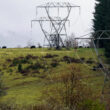I’m a big fan of Mona Waibel and her “Remembering the Good Old Days” features in the monthly “55 Plus” supplement.
The one on Cascadia’s history was particularly interesting. Cascadia is the gem of the state park system.
My mother’s (Barbara Norquist) family moved to Linn County in 1864. She would tell me of making the two-day trip by horse and wagon from Albany to Cascadia with her parents or grandparents. Once there, the men and boys would hike over High Deck to Quartzville to pan for gold (the “colors”) while the women and girls stayed behind to camp and line up each day to bottle the medicinal soda water, then go swimming. The entire area that is now the ball park would be filled with tents.
All four of my grandparents swore by the healthful properties of the soda water and in the ’40s and ’50s would make monthly, if not weekly, trips to Cascadia to bottle gallons of it. They’d always drop a few gallons off for us in Sweet Home. When over visiting them in Albany, the drink of choice would be soda water. By the time I reached my teens, I must have drunk enough to fill a swimming pool. I loved the different flavors from both of the wells.
It would behoove the park service to drill and purify the wells and open them to new generations. All my grandparents lived will into their eighties and I don’t recall their ever having medical problems.
I differ with Mona on two issues: First, the old Cascadia school is anything but “rundown.” Bob Hubler (the “unofficial mayor of Cascadia) and his wife Isabella have turned it into a fine, well-maintained home. I envied their children for having a gymnasium to play in during the winter. It is the rust-streaked detached Post Office that looks “shabby.”
Granted, Bob and son’s successful automotive engine rebuilding business leaves a few cars scattered in the back, but that’s really nothing for Cascadia or most rural addresses. OK, so there’s more than a few cars.
Secondly, poor Cascadia “Indian Cave.” In 1961, when the park and cave were threatened by flooding from the proposed Cascadia Dam, Dr. Thomas Newman of Portland State University was assigned the task of salvaging and studying what was left of the cave’s contents. He and his crew of archaeology students spent the entire summer removing and sifting all the dirt before returning it to the cave.
Sadly, the top layers (several thousand years of deposits) had been heavily looted by amateur “pot hunters.” The artifacts found are by now probably widely scattered and largely forgotten by selfish collectors. I admit that during my ignorant youth in the 1950s, I was guilty of camping for an a week at the cave and digging illegally and unethically for projective points (“arrow heads”). It being hard, dirty work and me being rather lazy, I didn’t find much – a dozen points or so. But in so doing I joined the “thieves of time” who forever destroyed what scientific and cultural knowledge might have been gained had the cave been left untouched.
To keep an accidental surface find is one thing. But to search for artifacts whether on public or private land, in this country, is wrong. Yes, the occupation dates back 8,000 years. How is this known? When Dr. Newman and his crew reached a certain level, they stopped finding artifacts, bone, or pollen. There was, instead, a layer of volcanic ash. A study of the ashes’ composition showed that it was from Mt. Mazama (Crater Lake) which erupted some 7,200 years ago. Once through this layer, artifacts, the Cascadia “willow points” were found again – thus 8,000 years, plus or minus. Radio carbon dating also confirmed the age.
While attending Portland State University in the 1980s, I took a class titled “Archeology for the Informed and Responsible Amature” which led me to change my greedy ways and turn over 12 or so points to be added to the artifacts collected by Dr. Newman.
Sadly, Dr. Newman died shortly thereafter and the collection was passed to Dr. Paul Baxter of Brownsville. I met with Dr. Baxter at the cave and showed him exactly where I extracted the points, but he has not properly studied them. I’ve teamed with Tony Farque, archaeologist with the local Forest Service, to encourage him to do it.
There is talk of the state (or county) purchasing the cave to protect the often abused petroglyphs. It has also been proposed that a display be created, interpreting the significance of the cave. It would be nice to have a few relics from the cave in that display wherever it is located.
I would encourage anyone having artifacts that can be identified as to the time and specific lace they were found to turn them over to a knowledgable, responsible archeologist such as Tony Farque before their story is lost and becomes meaningless.
East Linn County Museum has an entire case of beautiful points that were donated decades ago by some unknown person, their origin a mystery.
What a shame to have so much history lost.
Jim Musgrave
Sweet Home




